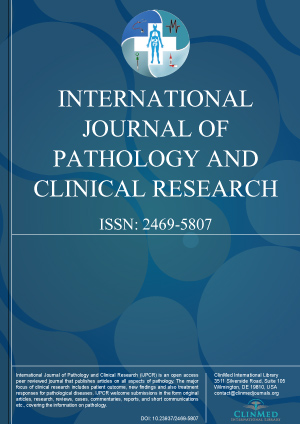Archive
Open Access DOI:10.23937/2469-5807/1510069
C3orf21 and Notch Signaling in Cancer:A Potential Biomarker
Yongjun Zhang, Dehou Deng and Wenlong Bao
Article Type: Perspective Article | First Published: June 11, 2018
Article Formats
- Full Article
- XML
- EPub Reader
Open Access DOI:10.23937/2469-5807/1510068
Manuel Cobo-Dols
Article Type: Short Review | First Published: May 30, 2018
Article Formats
- Full Article
- XML
- EPub Reader
Open Access DOI:10.23937/2469-5807/1510067
Arti Easwar, Dion Middleton and Saverio Ligato
Article Type: Case Report | First Published: May 26, 2018
Article Formats
- Full Article
- XML
- EPub Reader
Open Access DOI:10.23937/2469-5807/1510066
Effects of Residual Oil Fly Ash (ROFA) on the Development of Lung Cancer in Mice
Luis Fernando Antunes Pinheiro, Leonardo Fleury Orlandini, Mariana Scombatti Filipe, Jose Antonio Cordeiro and Patricia Maluf Cury
Article Type: Review Article | First Published: May 07, 2018
Article Formats
- Full Article
- XML
- EPub Reader
Open Access DOI:10.23937/2469-5807/1510065
M Nadeem Ahmed, Debby Vannoy, Ann Frederick and Xuan Bi
Article Type: Research Article | First Published: April 20, 2018
Article Formats
- Full Article
- XML
- EPub Reader
Open Access DOI:10.23937/2469-5807/1510064
Mohammed Alorini
Article Type: Research Article | First Published: March 03, 2018
Article Formats
- Full Article
- XML
- EPub Reader

Volume 4
Issue 1
Issue 1
